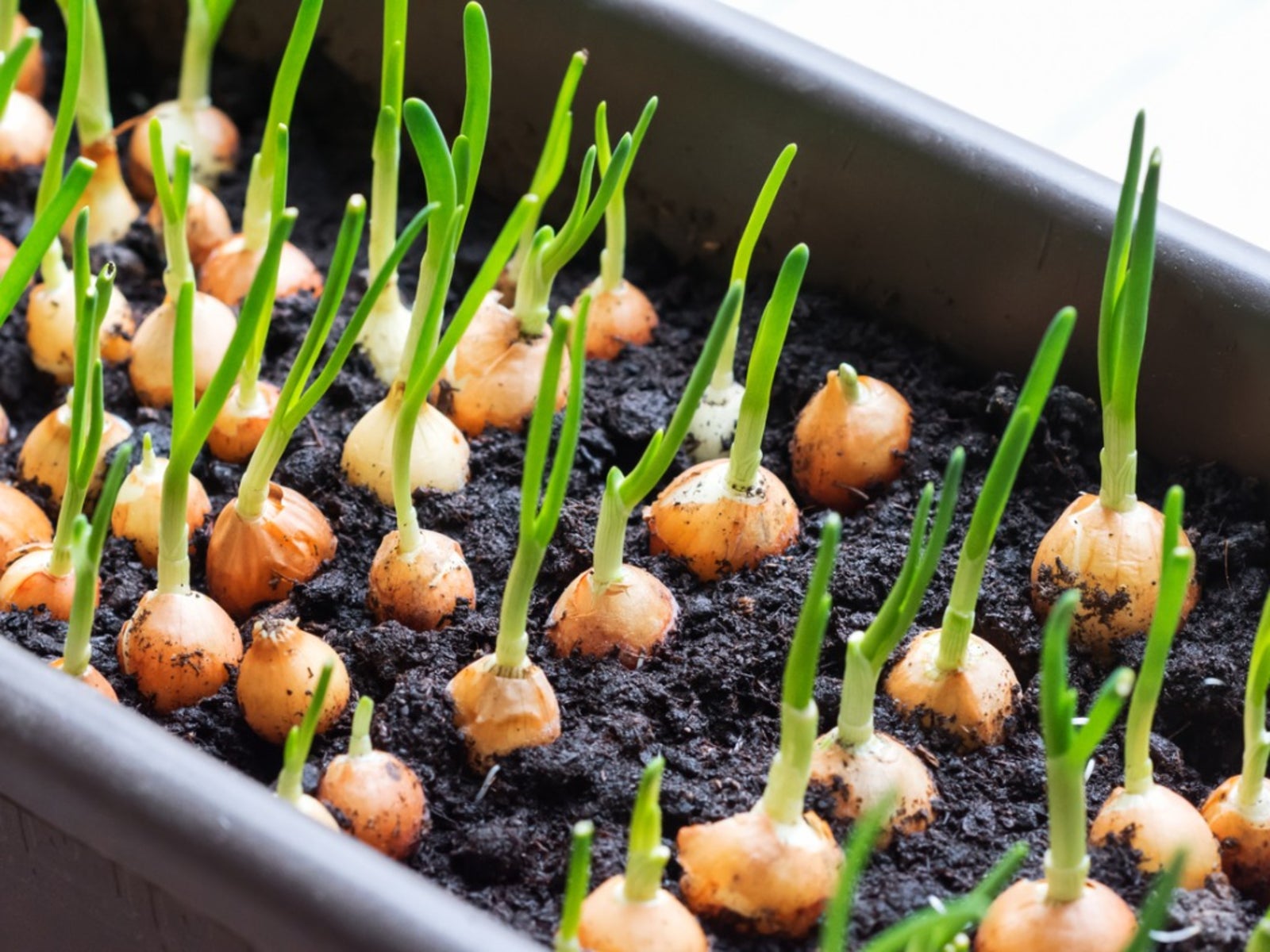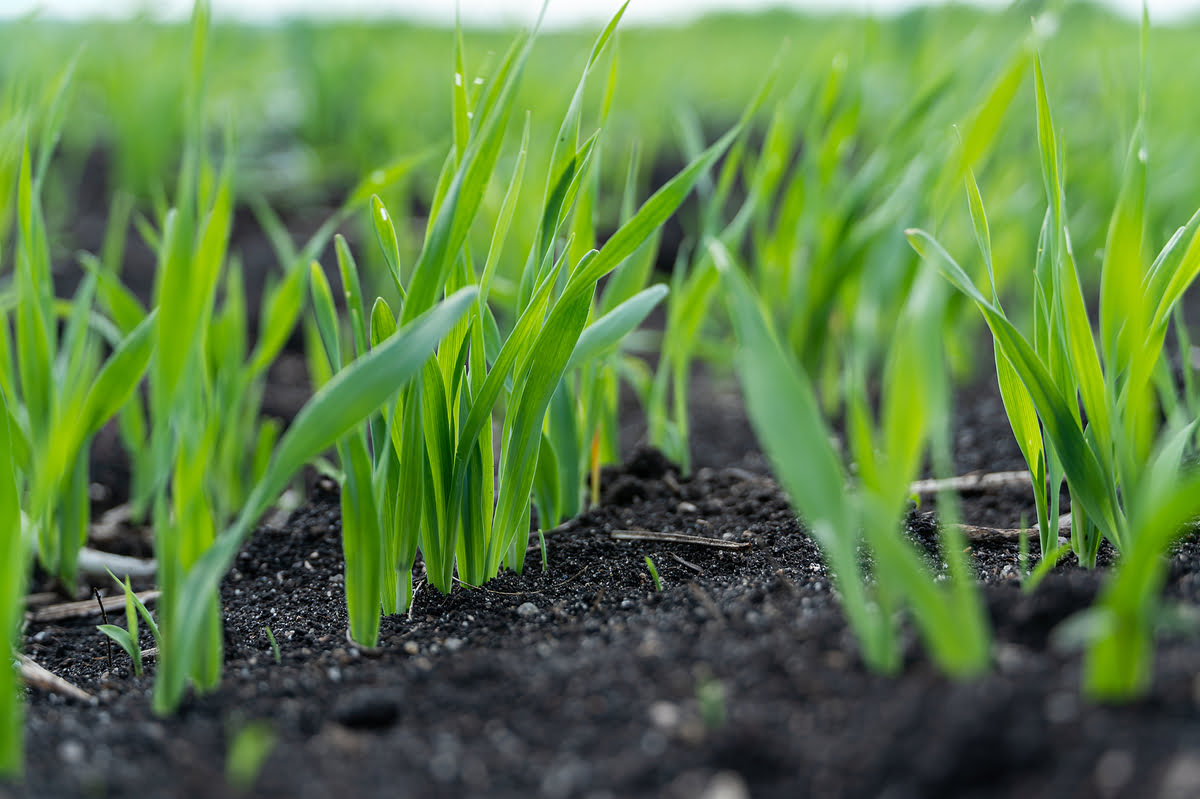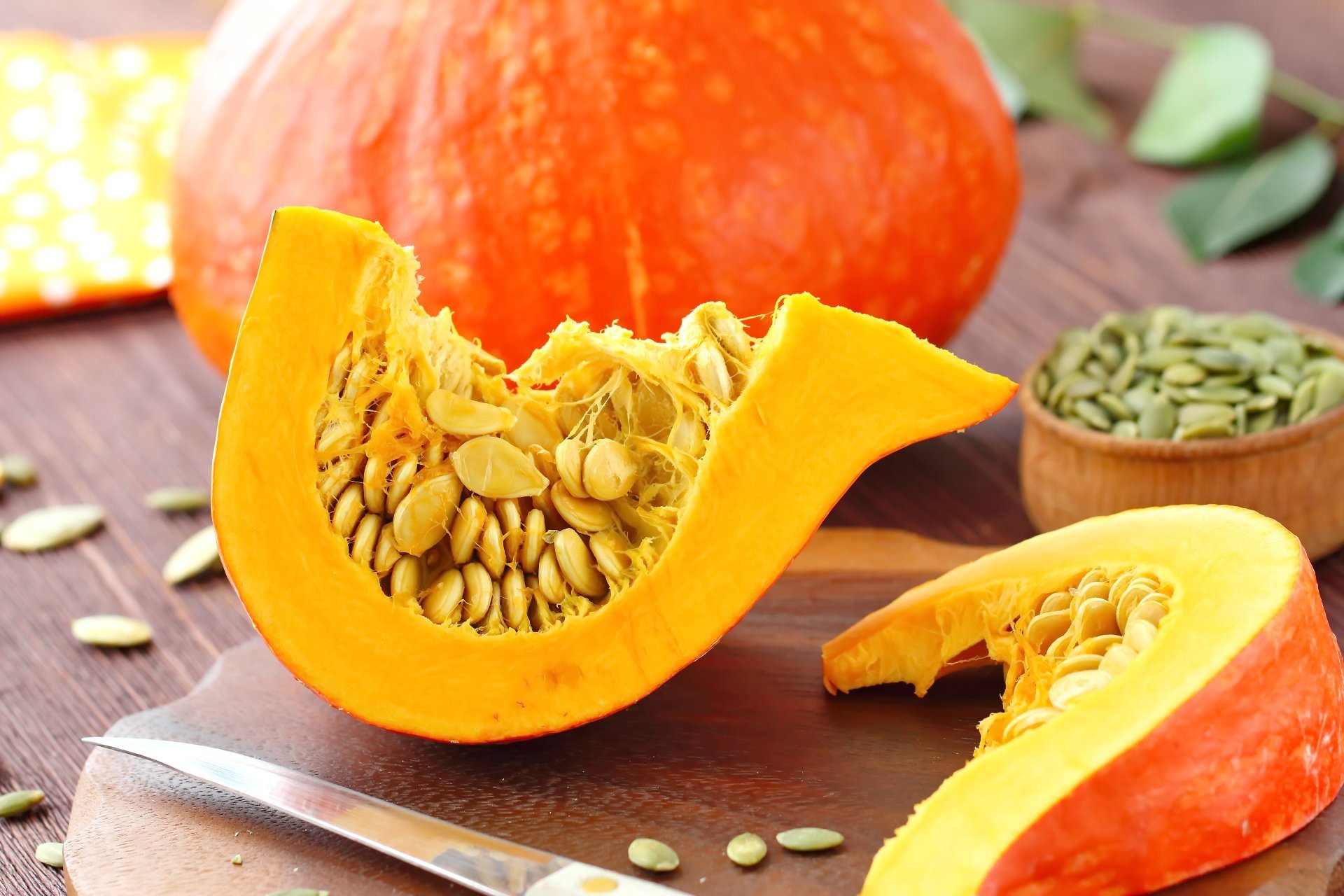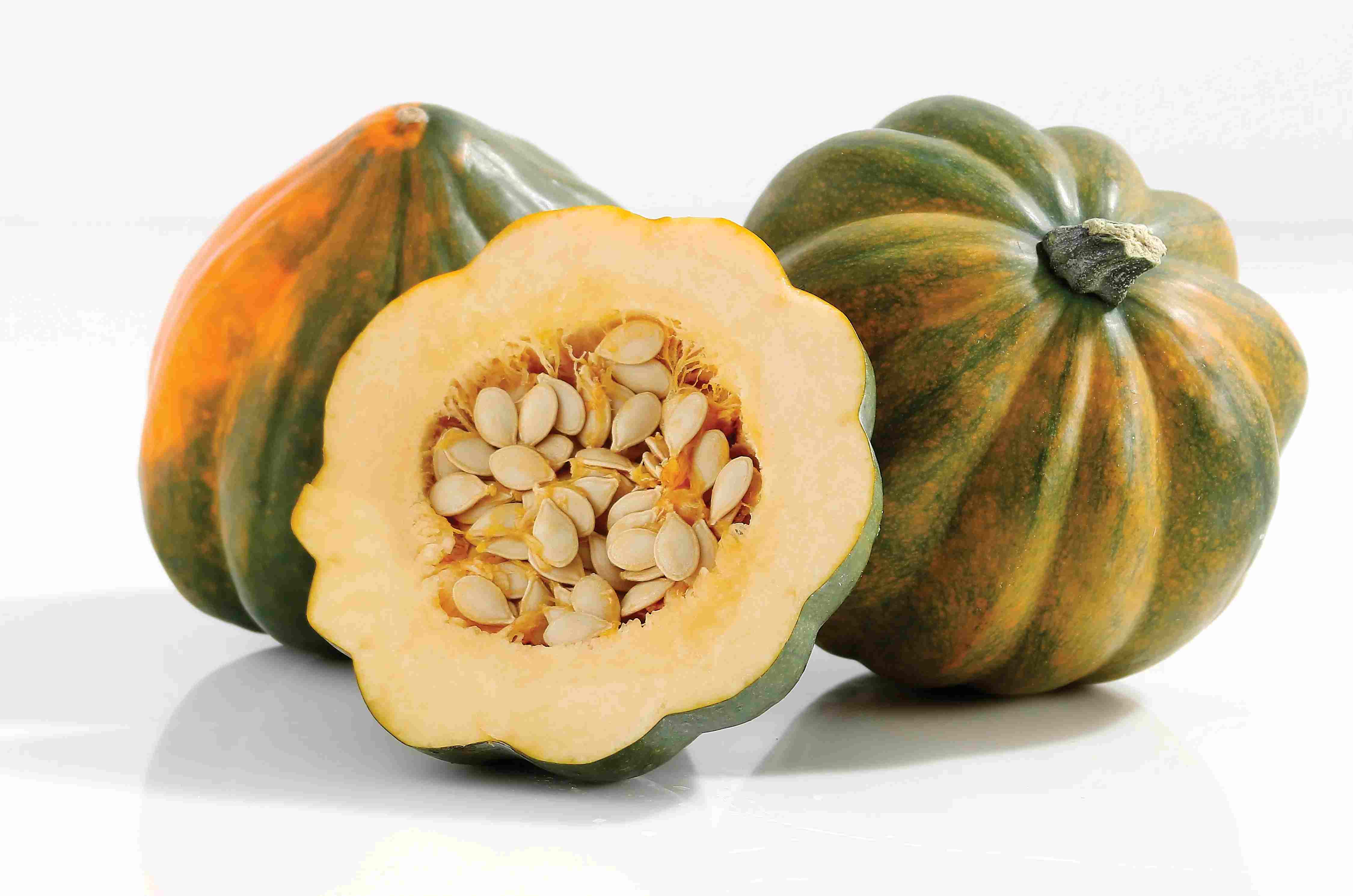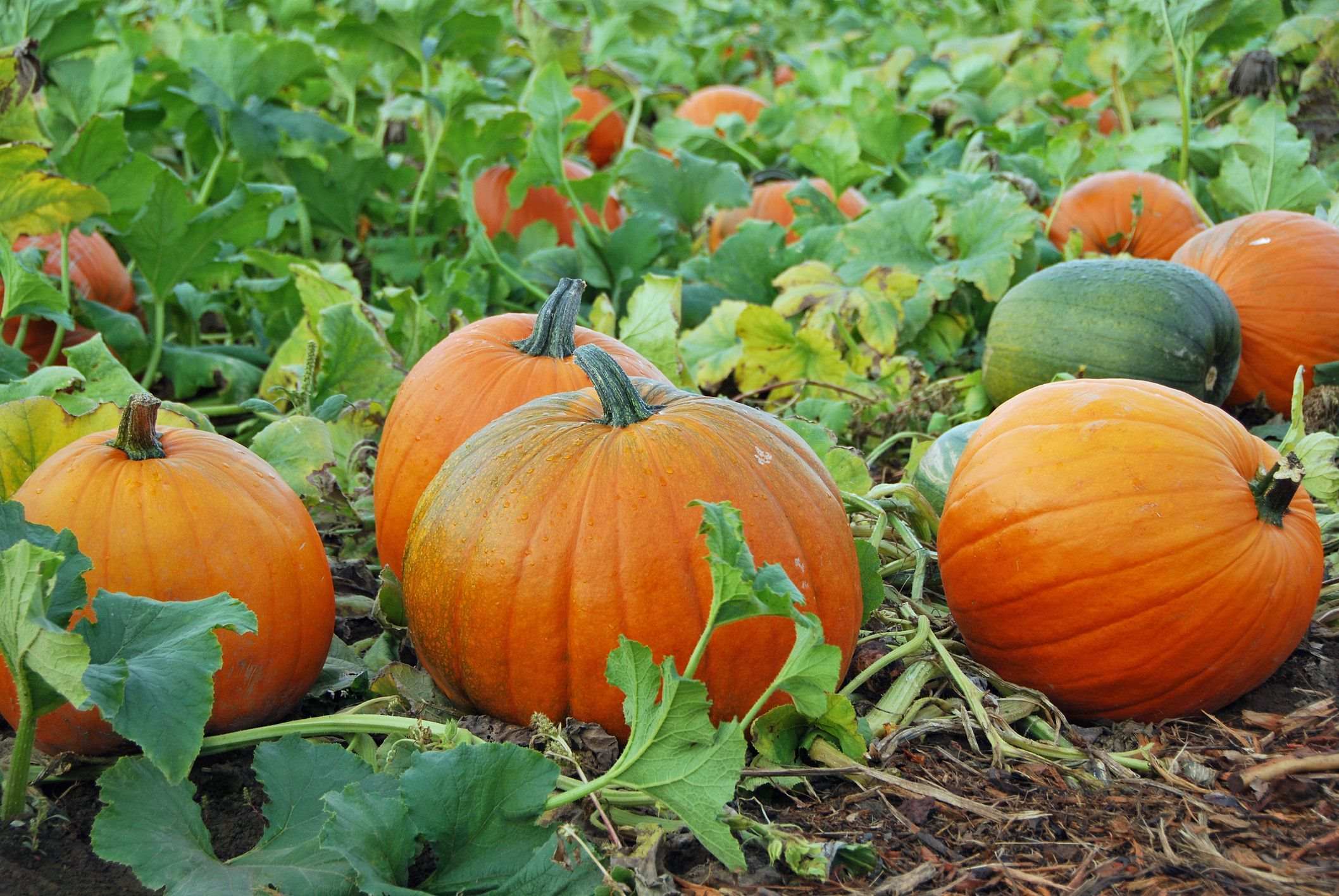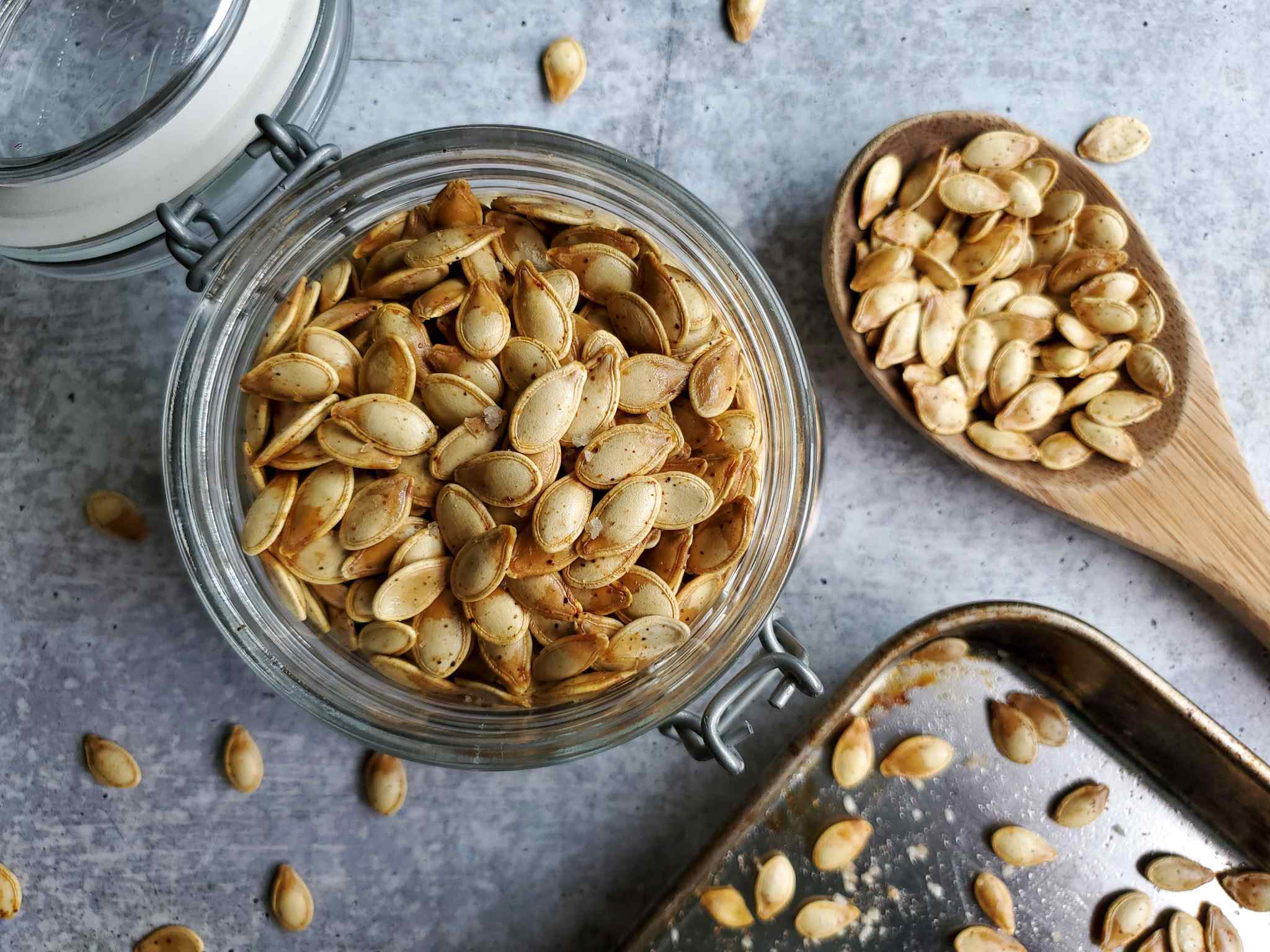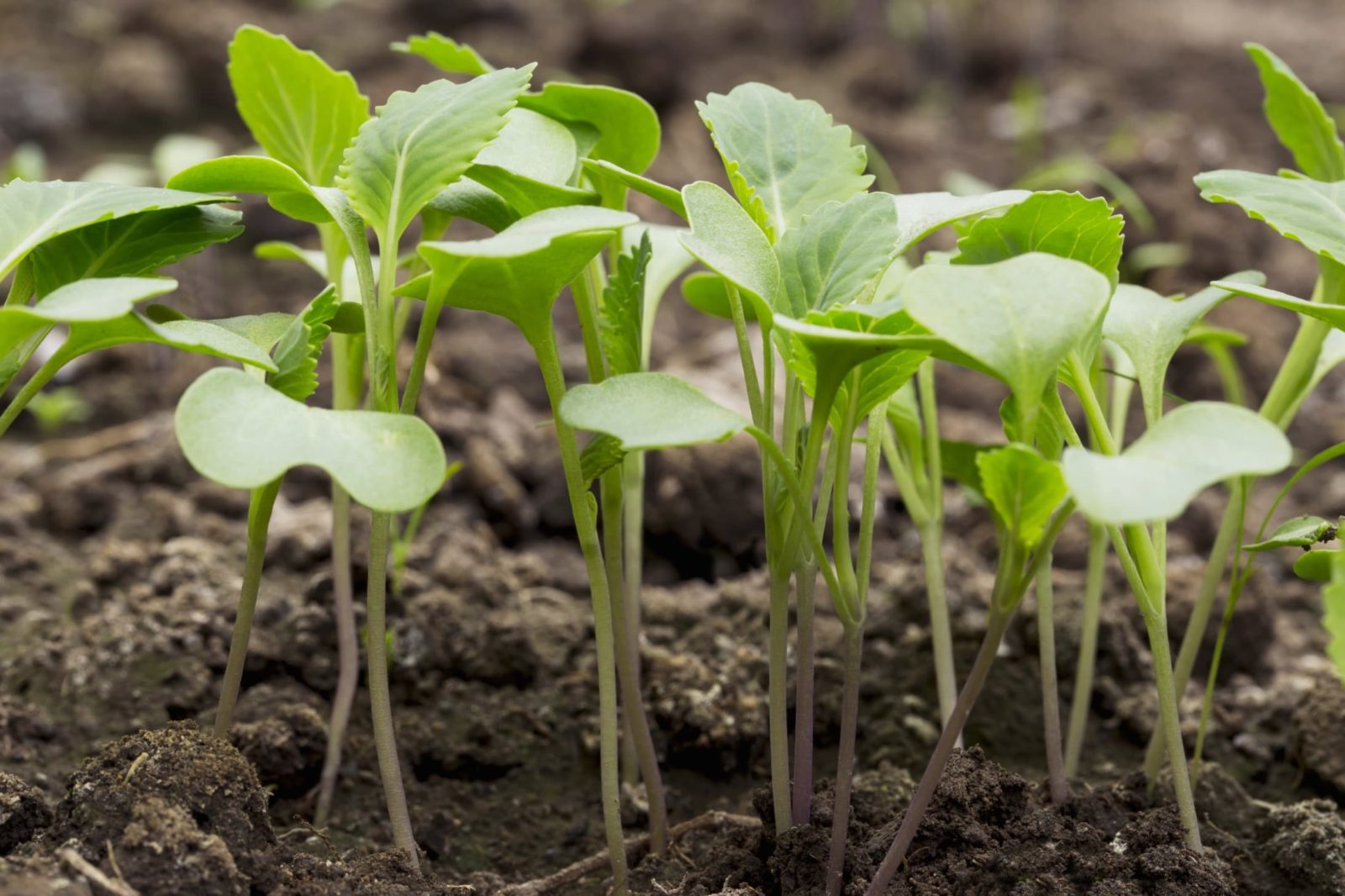Home>Types of Gardening>Edible Gardening>How To Plant Pumpkin Seedlings
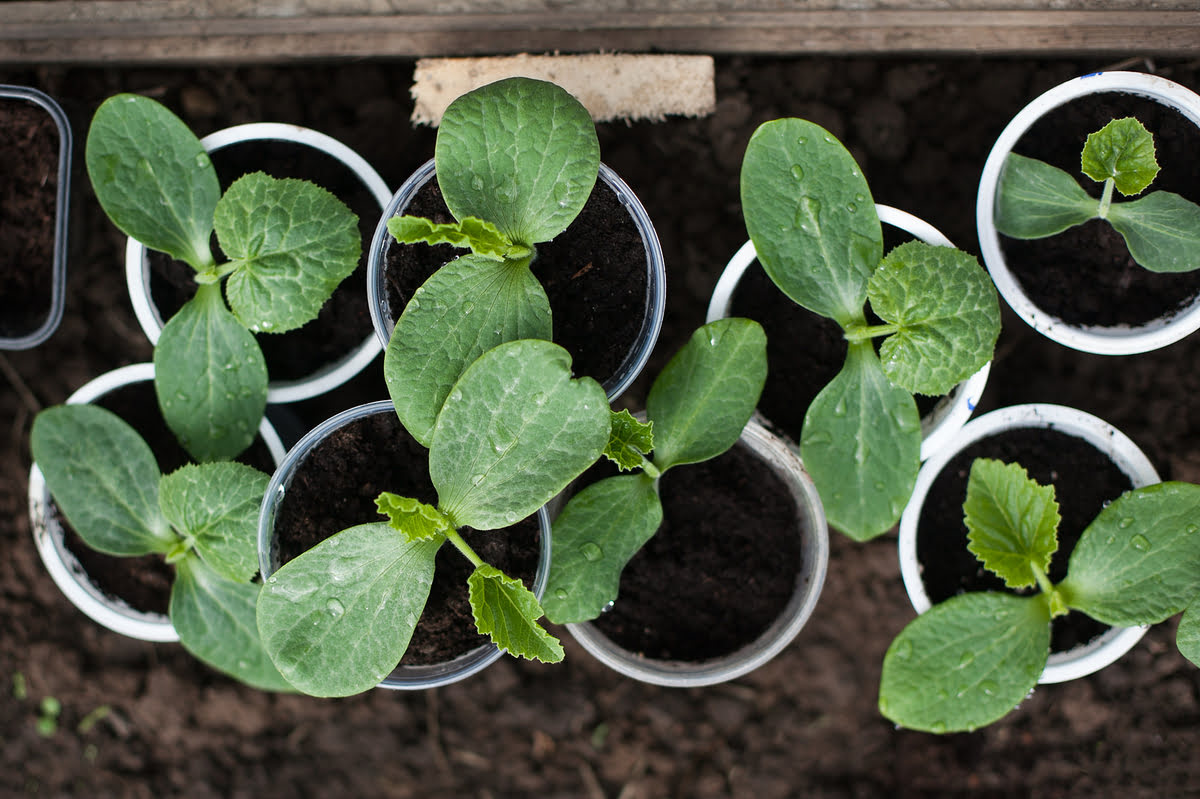

Edible Gardening
How To Plant Pumpkin Seedlings
Published: January 5, 2024
Learn how to plant pumpkin seedlings in your garden with our expert tips for edible gardening. Start growing your own pumpkins today!
(Many of the links in this article redirect to a specific reviewed product. Your purchase of these products through affiliate links helps to generate commission for Chicagolandgardening.com, at no extra cost. Learn more)
Table of Contents
**
Introduction
**
Welcome to the exciting world of edible gardening! If you're a fan of autumn festivities and the vibrant colors that accompany the harvest season, then growing your own pumpkin patch is a delightful endeavor. Whether you're a novice gardener or a seasoned green thumb, the process of planting pumpkin seedlings is a rewarding journey that culminates in the joy of cultivating your own homegrown pumpkins.
Pumpkins are not only a symbol of the fall season, but they also offer a wealth of culinary and decorative possibilities. From classic pumpkin pies to creative carving projects, the versatility of pumpkins makes them a beloved addition to any garden. By planting pumpkin seedlings, you are embarking on a fulfilling experience that allows you to witness the miraculous transformation of tiny seeds into robust vines bearing vibrant, plump pumpkins.
In this comprehensive guide, we will explore the step-by-step process of planting pumpkin seedlings. From selecting the right seedlings to nurturing them into flourishing plants, you will gain valuable insights into the art of cultivating these iconic gourds. Whether you have a spacious backyard or a cozy balcony, growing pumpkin seedlings can be adapted to various gardening spaces, making it an accessible and enjoyable venture for all.
Join us as we delve into the world of edible gardening and unlock the secrets to successfully planting, caring for, and harvesting your very own pumpkins. Let's roll up our sleeves, dig into the soil, and embark on this enriching journey of cultivating pumpkin seedlings.
**
Choosing the Right Seedlings
**
Before diving into the planting process, it’s crucial to select the right pumpkin seedlings to ensure a thriving garden. When choosing seedlings, consider the specific variety of pumpkins you want to grow. Whether you prefer the classic jack-o’-lantern variety, miniature decorative pumpkins, or pie pumpkins for culinary endeavors, each type has unique characteristics that cater to different preferences.
When browsing through a nursery or seed catalog, pay attention to the recommended growing conditions for each pumpkin variety. Some pumpkins thrive in warmer climates, while others are more resilient in cooler temperatures. Additionally, consider the space available in your garden or containers, as certain pumpkin varieties require more room to sprawl and thrive.
Inspect the seedlings for signs of health and vigor. Opt for seedlings with sturdy stems, vibrant green leaves, and a robust overall appearance. Avoid seedlings with yellowing or wilting foliage, as these may indicate underlying issues that could hinder their growth.
Furthermore, consider the maturity of the seedlings. While it may be tempting to select larger, more developed seedlings, younger and smaller seedlings often adapt more seamlessly to transplanting and establish stronger root systems in their new environment.
Lastly, if you’re purchasing seedlings from a nursery or garden center, inquire about the seedling’s history. Understanding the care and conditions the seedlings have been exposed to can provide valuable insights into their adaptability and potential challenges they may encounter during the transplanting process.
By carefully selecting the right pumpkin seedlings, you are laying a solid foundation for a successful and bountiful harvest. With healthy, well-suited seedlings, you can set the stage for a thriving pumpkin patch that will bring joy and abundance to your edible garden.
**
Preparing the Soil
**
Creating an optimal environment for your pumpkin seedlings begins with preparing nutrient-rich soil that supports their growth and development. Pumpkins thrive in well-draining soil with a rich organic composition, making it essential to lay the groundwork for their success through soil preparation.
Start by selecting a sunny location for your pumpkin patch. Ideally, the area should receive ample sunlight, as pumpkins are sun-loving plants that require approximately 6 to 8 hours of direct sunlight daily. Once you’ve identified the perfect spot, it’s time to assess and enhance the soil quality.
Begin by clearing the designated area of any debris, weeds, or rocks. This ensures a clean canvas for your pumpkin patch and minimizes competition for essential nutrients. Next, loosen the soil to a depth of at least 12 inches, breaking up any compacted areas and creating a loose, aerated foundation for the seedlings’ root systems to thrive.
Enrich the soil by incorporating organic matter such as compost or well-rotted manure. These organic amendments bolster the soil’s fertility, improve its structure, and enhance its ability to retain moisture—a crucial factor in sustaining healthy pumpkin plants. Additionally, consider conducting a soil test to assess its pH levels and nutrient content. This insight allows you to make targeted adjustments, ensuring that the soil provides an ideal growing environment for your pumpkin seedlings.
As you prepare the soil, keep in mind the sprawling nature of mature pumpkin vines. Providing ample space between planting hills or mounds is essential to accommodate the plants’ extensive growth. Aim for a spacing of 6 to 8 feet between hills, allowing the pumpkin vines to spread freely and thrive without overcrowding.
By meticulously preparing the soil, you are establishing a nurturing foundation that sets the stage for robust, flourishing pumpkin plants. The enriched, well-drained soil will support the seedlings as they take root and embark on their journey toward producing vibrant, bountiful pumpkins.
**
Planting the Seedlings
**
With the soil primed and ready, it’s time to embark on the exciting process of planting your pumpkin seedlings. Whether you’re cultivating a sprawling pumpkin patch in your backyard or nurturing these vibrant gourds in containers on a balcony, the planting phase is a pivotal step in the journey toward a thriving pumpkin harvest.
When planting pumpkin seedlings, it’s essential to consider their space requirements and growing habits. Pumpkins are renowned for their expansive vines, so allocating sufficient space is crucial for their optimal development. Begin by creating planting hills or mounds to provide the seedlings with the well-drained, elevated environment they prefer.
To create planting hills, mound the soil into circular, elevated structures approximately 12 inches in diameter and 6 inches high. If you’re working with limited space or opting for container gardening, select spacious containers with a depth of at least 18 inches to accommodate the seedlings’ extensive root systems.
Plant the seedlings at the center of each hill or container, ensuring that the root ball is nestled securely in the soil. If you’re transplanting seedlings from pots, handle them with care to avoid disturbing the roots. Gently loosen the root ball and position the seedlings at the appropriate depth, ensuring that the soil level matches the depth at which they were previously growing.
As you plant the seedlings, maintain the recommended spacing between each hill or container to allow ample room for the sprawling vines to expand. Adequate spacing not only promotes healthy air circulation and minimizes the risk of disease but also facilitates efficient vine management as the pumpkins mature.
After planting the seedlings, provide them with a generous watering to settle the soil and support their transition into their new environment. As they acclimate to their surroundings, the seedlings will gradually establish their roots and begin their journey toward robust growth and the eventual production of vibrant, plump pumpkins.
By planting the seedlings with care and foresight, you are nurturing the foundation for a flourishing pumpkin patch that promises an abundant harvest and the fulfillment of your edible gardening aspirations.
**
Caring for Your Pumpkin Seedlings
**
As your pumpkin seedlings take root and begin their journey toward maturity, providing attentive care is essential to ensure their health and vigor. From nurturing their growth to safeguarding them against potential challenges, tending to your pumpkin seedlings is an enriching and rewarding aspect of the gardening experience.
Watering plays a pivotal role in the care of pumpkin seedlings. While pumpkins require consistent moisture to thrive, it’s crucial to strike a balance and avoid overwatering, which can lead to root rot and other issues. Aim to keep the soil consistently moist but not waterlogged, particularly during the crucial stages of flowering and fruit development. Mulching around the base of the seedlings can help retain soil moisture and regulate temperature, contributing to their overall well-being.
Regular monitoring of the seedlings is paramount, allowing you to promptly address any signs of distress or pest infestations. Keep an eye out for wilting foliage, discoloration, or unusual growth patterns, as these may indicate underlying issues that require attention. Additionally, implement preventive measures to deter common pests and diseases, such as using organic pest control methods and maintaining good garden hygiene.
Supporting the sprawling vines of mature pumpkin plants is essential to safeguard the developing fruit and promote healthy growth. As the vines expand, gently guide them to prevent overcrowding and promote efficient air circulation. This can be achieved by carefully positioning the vines and using soft ties or fabric strips to secure them to supportive structures, such as trellises or wire frames, as they grow.
Fertilizing the soil at appropriate intervals contributes to the robust growth of your pumpkin seedlings. Incorporate a balanced, organic fertilizer into the soil to provide essential nutrients that sustain the plants’ development. Additionally, consider conducting periodic soil tests to assess nutrient levels and make informed adjustments to support the seedlings’ nutritional needs.
Lastly, stay attuned to the environmental conditions that may impact your pumpkin seedlings. Be mindful of temperature fluctuations, particularly as the seasons transition, and take measures to protect the seedlings from extreme heat or cold. Providing shade during intense sunlight and implementing frost protection measures when necessary can safeguard the seedlings from adverse weather conditions.
By diligently caring for your pumpkin seedlings, you are nurturing the potential for a bountiful harvest and the realization of your edible gardening aspirations. Your attentive efforts will contribute to the robust growth and vitality of the seedlings as they progress toward producing vibrant, plump pumpkins.
**
Harvesting Your Pumpkins
**
The culmination of your efforts in nurturing pumpkin seedlings is the eagerly anticipated harvest, marking the fruition of your gardening endeavors and the arrival of vibrant, plump pumpkins. As the pumpkins reach maturity, it’s essential to employ proper techniques for harvesting to ensure optimal quality and longevity.
One of the key indicators of a pumpkin’s readiness for harvest is its vibrant coloration and firm, sturdy rind. As the pumpkins mature, their hues intensify, signaling their readiness for picking. Additionally, gently press your fingernail against the pumpkin’s skin; if it resists puncture and feels sufficiently hard, it is likely ripe for harvesting.
When harvesting pumpkins, utilize sharp, clean gardening shears or a sturdy knife to carefully sever the stem, leaving a few inches of it attached to the pumpkin. This residual stem aids in prolonging the pumpkins’ shelf life and prevents premature decay. Exercise caution to avoid damaging the pumpkins during the harvesting process, as any injuries to the skin can compromise their longevity.
After harvesting, it’s essential to handle the pumpkins with care to prevent bruising or injury. Transport them with gentle handling, avoiding rough impacts or excessive jostling that could lead to damage. Once the pumpkins are safely harvested and transported, it’s time to prepare them for storage or immediate use, depending on your intended purpose.
If you plan to store the pumpkins for an extended period, ensure they are thoroughly cured to enhance their longevity. Curing involves allowing the pumpkins to air-dry in a warm, well-ventilated area for approximately 10 to 14 days. This process toughens the skin, reduces moisture content, and fortifies the pumpkins for prolonged storage, ensuring that they remain in optimal condition for an extended duration.
For immediate use, revel in the culinary possibilities offered by your freshly harvested pumpkins. From crafting delectable pumpkin pies and savory soups to utilizing the flesh for creative culinary endeavors, the freshly harvested pumpkins present a wealth of opportunities to indulge in the flavors of the season.
By embracing proper harvesting techniques and handling your pumpkins with care, you are poised to savor the fruits of your labor and relish the abundant rewards of your edible gardening journey. Whether you’re adorning your home with vibrant decorative pumpkins or savoring the delectable flavors of homemade pumpkin creations, the harvest marks the culmination of a gratifying and enriching gardening experience.

